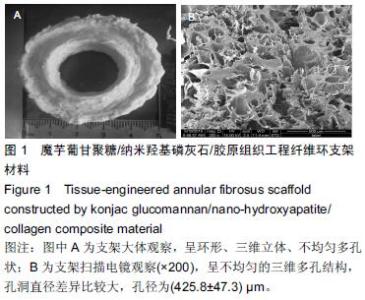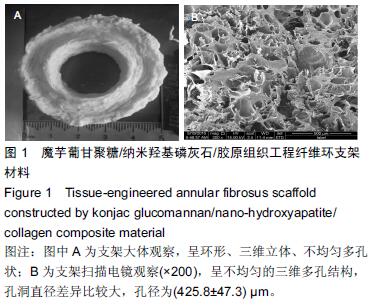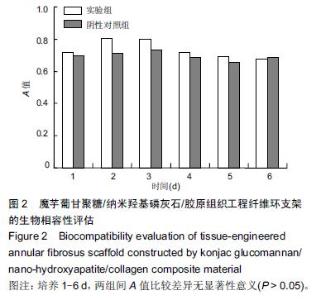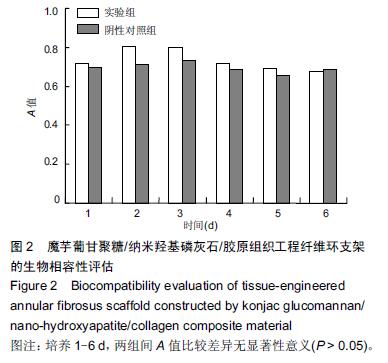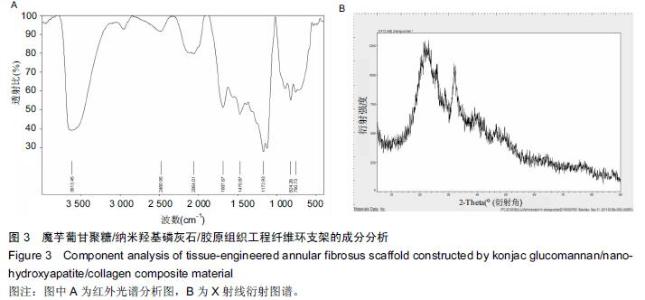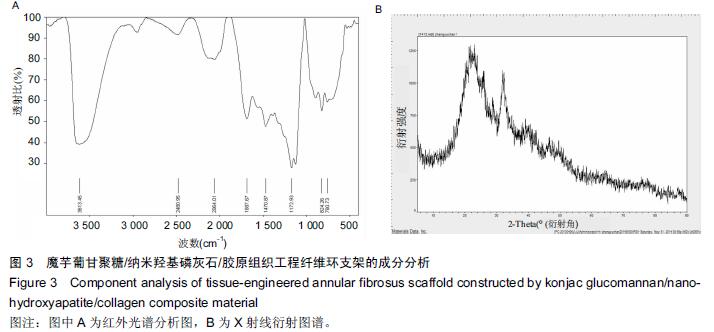| [1] Iatridis JC,Nicoll SB,Michalek AJ,et al.Role of biomechanics on intervertebral disc degeneration and regeneration therapies: what needs repairing in the disc and what are promising biometerials for its repair? Spine J.2013;13(3):243-262. [2] Chan SC,Gantenbein-Ritter B.Intervertebral disc regeneration or repair and stem cell therapy--feasible or fiction? Swiss Med Wkly.2012;31(5):142. [3] Ratcliffe I,Williams PA,Viebke C,et al.Physicochemical characterization of konjac glucomannan. Biomacromolecules.2005;6(4):1977-1986. [4] Zhao X,Li J,Jin W,et al.Preparation and characterization of a novel pH-response dietary fiber: chitosan-coated konjac glucomannan.Carbohydr Polym.2015;117:1-10. [5] Zhang C,Chen JD,Yang FQ. Konjac glucomannan, a promising polysaccharide for OCDDS. Carbohydr Polym.2015;104:175-181. [6] Wang J,Liu C,Shuai Y,et al.Controlled release of anticancer drug using graphene oxide as a drug-binding effector in konjac glucomannan/sodium alginate hydrogels[J]. Colloids Surf B Biointerfaces. 2014;113:223-229. [7] Hong Y,Gong Y,Gao C,et al.Collagen-coated polylactide microcarriers/chitosan hydrogel composite: injectable scaffold for cartilage regeneration.J Biomed Mater Res A.2008;85(3):628-637. [8] Zhu WK,Cong HP,Yao HB,et al.Bioinspired, ultrastrong, highly biocompatible, and bioactive natural polymer/graphene oxide nanocomposite films.Small. 2015;11(34):4298-4302 [9] Kondo T,Shinozaki T,Oku H,et al.Konjac glucomannan- based hydrogel with hyaluronic acid as a candidate for a novel scaffold for chondrocyte culture. J Tissue Eng Regen Med.2009;3(5):361-367. [10] Ma T,Shang BC,Tang H,et al.Nano-hydroxyapatite/ chitosan/konjac glucomannan scaffolds loaded with cationic liposomal vancomycin: preparation, in vitro release and activity against Staphylococcus aureus biofilms.J Biomater Sci Polym Ed.2011; 22(12): 1669-1681. [11] Zhuang Y,Huang B,Li CQ,et al.Construction of tissue-engineered composite intervertebral disc and preliminary morphological and biochemical evaluation.Biochem Biophys Res Commun. 2011; 407:327-332. [12] Huang B,Zhuang Y,Li CQ,et al.Regeneration of the Intervertebral Disc with Nucleus Pulposus Cell-seeded CollagenⅡ/Hyaluronan/ Chondroitin-6-sulfate tri-copolymer Constructs in a Rabbit Disc Degeneration Model.Spine.2011;36(26):2252-2259. [13] Venkatesan J,Kim SK.Nano-hydroxyapatite composite biomaterials for bone tissue engineering--a review.J Biomed Nanotechnol.2014;10(10):3124-3140. [14] Mestres G,Espanol M,Xia W,et al.Inflammatory Response to Nano- and Microstructured Hydroxyapatite.PLoS One.2015;10(4):372-381. [15] Mohamed KR,Beherei HH,El-Rashidy ZM.In vitro study of nano-hydroxyapatite/chitosan-gelatin composites for bio-applications.J Adv Res. 2014;5(2): 201-208. [16] Zhou H,Lee J.Nanoscale hydroxyapatite particles for bone tissue engineering[J]. Acta Biomater. 2011;7(7): 2769-2781. [17] Fox K,Tran PA,Tran N.Recent advances in research applications of nanophase hydroxyapatite. Chemphyschem. 2012;13(10):2495-2506. [18] Hudson KD,Alimi M,Grunert P,et al.Recent advances in biological therapies for disc degeneration: tissue engineering of the annulus fibrosus, nucleus pulposus and whole intervertebral discs.Curr Opin Biotechnol. 2013;24(5):872-879. [19] Jin L,Shimmer AL,Li X.The challenge and advancement of annulus fibrosus tissue engineering. Eur Spine J.2013;22(5):1090-1100. [20] 吴焕岭,申夏夏,朱利民.湿法纺丝技术在新型载药系统中的研究进展与前景分析[J].材料导报, 2015,29(13):112-117. [21] Clouet J,Vinatier C,Merceron C.The intervertebral disc: from pathophysiology to tissue engineering.Joint Bone Spine.2009;76(6):614-618. [22] Masuda K,Lotz JC.New challenges for intervertebral disc treatment using regenerative medicine.Tissue Eng Part B Rev.2010;16(1):147-158. [23] Fassett DR,Kurd MF,Vaccaro AR. Biologic solutions for degenerative disk disease. J Spinal Disord Tech. 2009; 22(4):297-308. |
